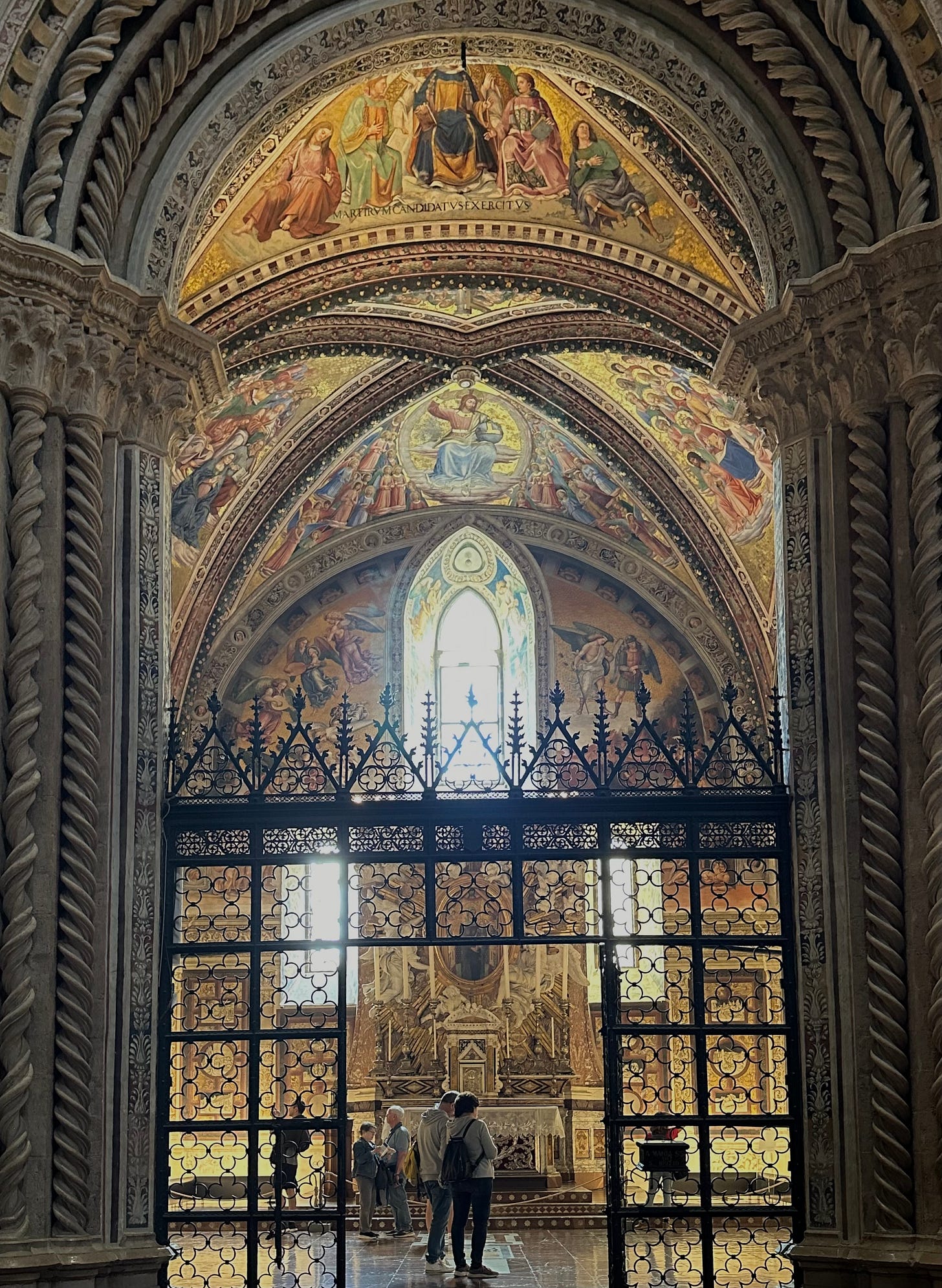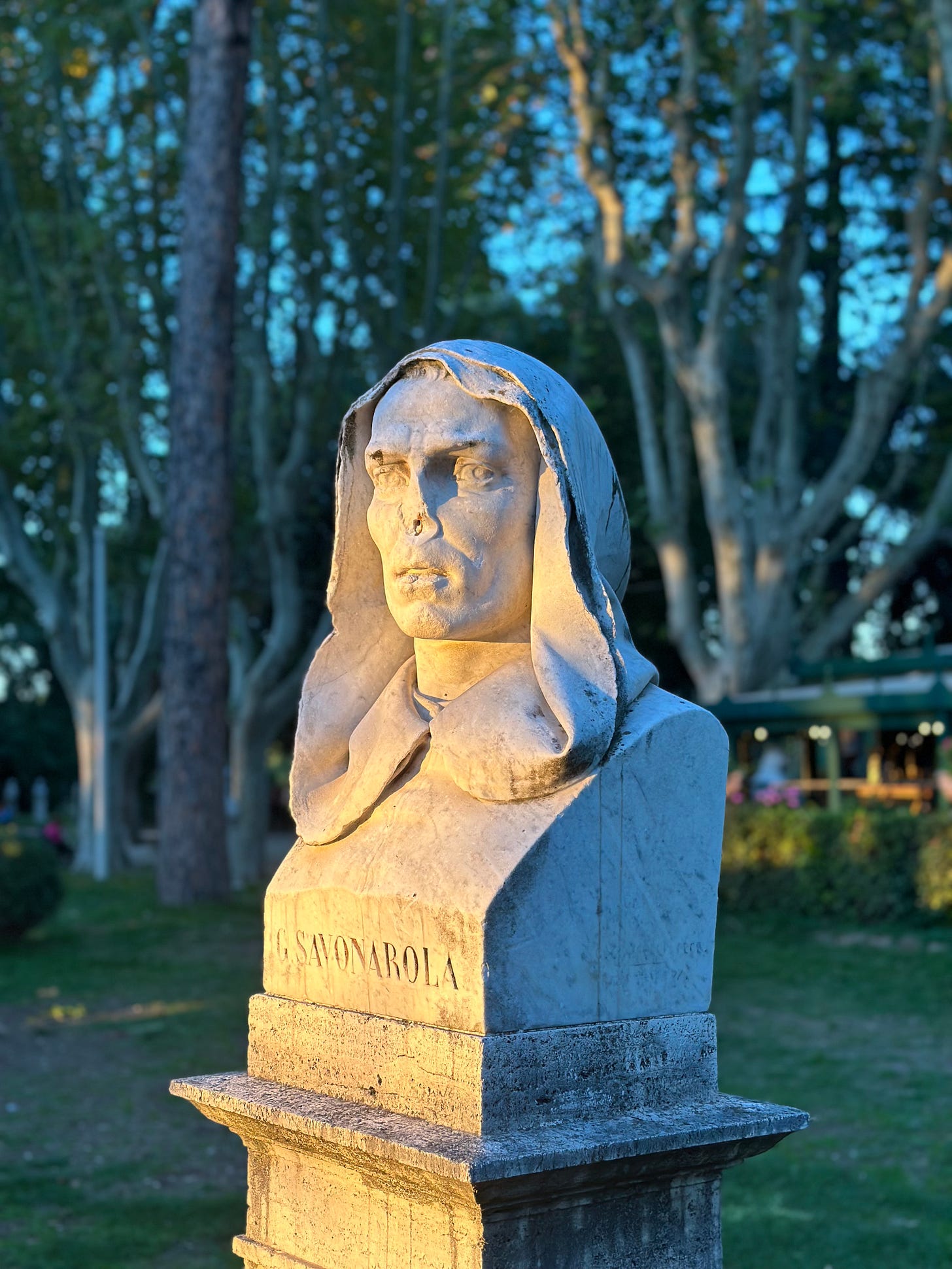The Terror of the End of Days
Beato Angelico and Luca Signorelli at the Chapel of San Brizio at Orvieto Cathedral
All photos taken by me in June 2025
Arbitrary as the measurement of time is, we humans nevertheless set great store by it. Particularly in years ending in zeros. I don’t pretend to have any idea at all of the technological ins and outs of the threat of the “millennium bug”, but there was something profoundly atavistic about the collective fear of leaping into the unknown as the calendar moved, inexorably, into the dramatic curves of the year 2000.
Five centuries earlier the approach of the half millennium had also brought fears of apocalypse, not unreasonably given the turbulent political and social situation in central Italy. As the fifteenth century drew to its uncertain close, Luca Signorelli was called to Orvieto Cathedral to complete the decoration of the Cappella Nova (and subsequently called “San Brizio” following the placing of the miraculous image of the Madonna di San Brizio on the altar in the seventeenth century) which had been begun by Frà Angelico and left incomplete for over four decades.
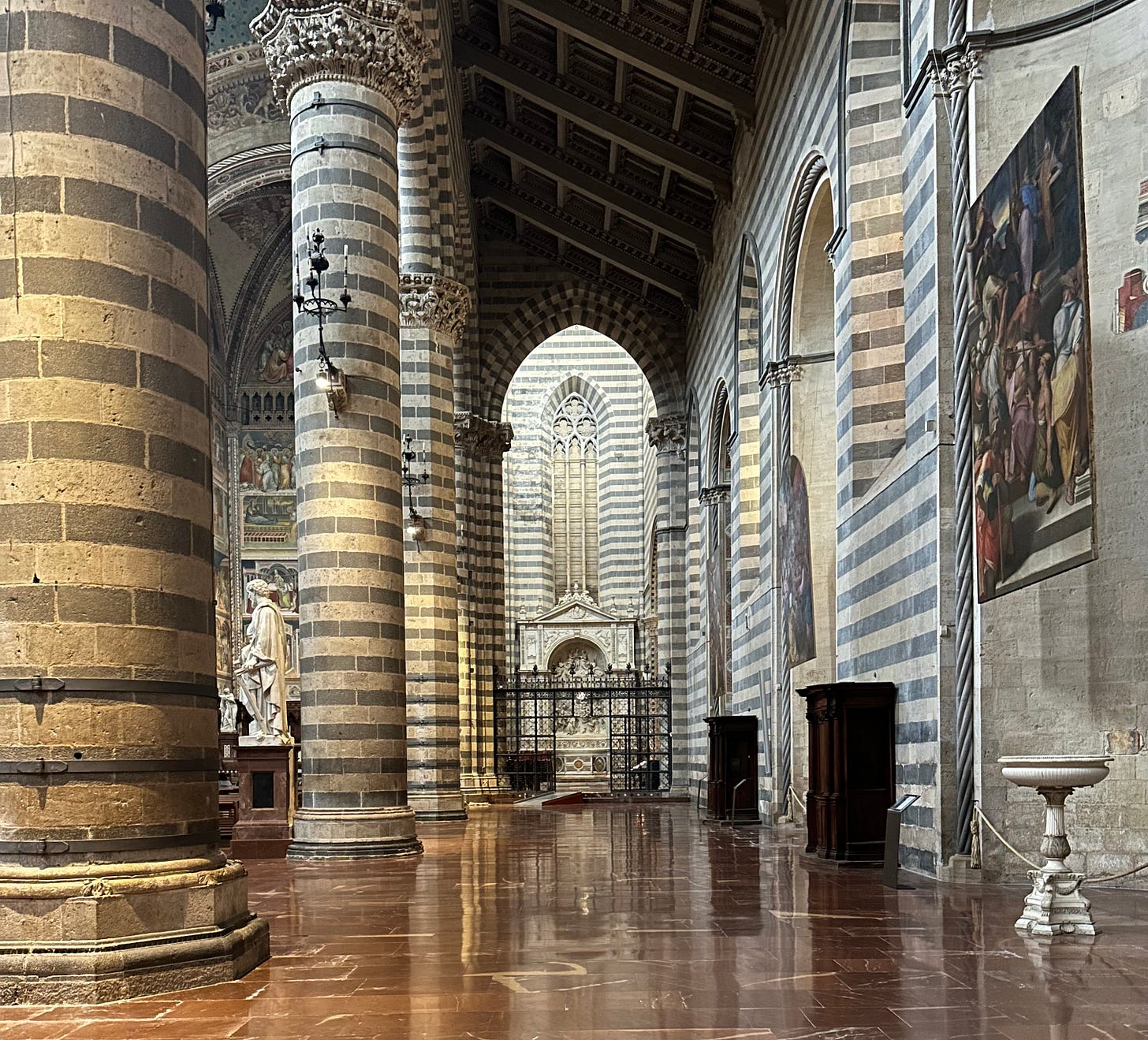
The building of the chapel in the right transept, an addition to the thirteenth century phase of construction of the cathedral, had begun in 1396 by order of the will of Tommaso di Micheluccio who had stipulated a dedication to the Virgin as Queen of Heaven. Time moves slowly in the world of cathedral building, and in 1447 the Opera del Duomo had given the contract for the decoration of the chapel to the Dominican Frà Angelico who was then employed in the Vatican Palaces painting the Cappella Niccolina for Pope Nicholas V.
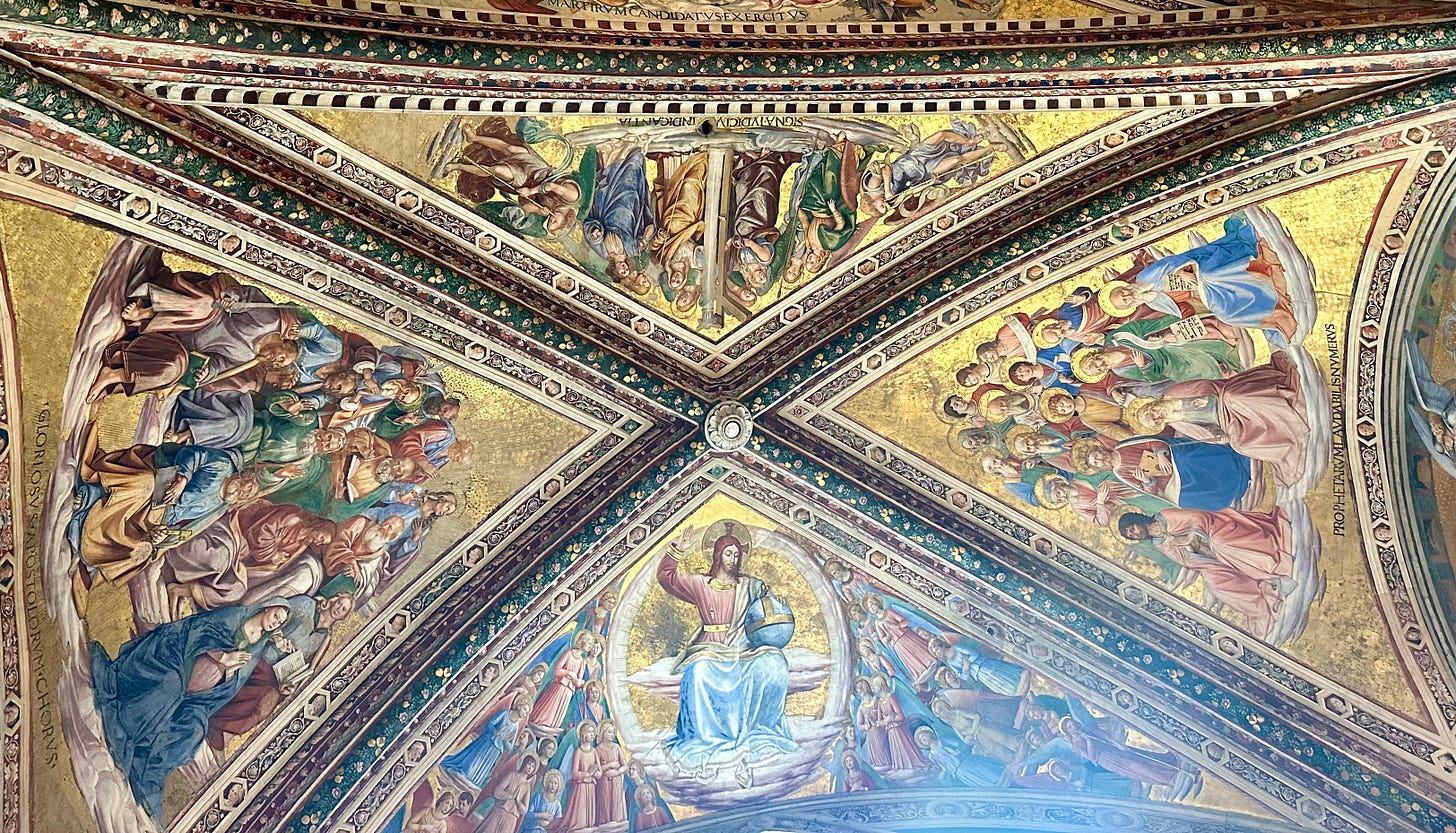
In a move I can very much sympathise with at the moment, Frà Angelico and his entourage (most notably Benozzo Gozzoli) fled the torrid heat of a Roman summer in June of 1447 and spent fifteen weeks painting two panels of one of the two cross vaults of the chapel, that closer to the altar wall. Two years earlier the torturous discussions of the Council of Florence had concluded with the, fleeting, bridging of the Great Schism which had split Eastern and Western Churches for four centuries. This would prove an ultimately thwarted attempt which sought to unite Christendom against the common enemy of the Ottoman Empire as it marched ever closer to the conquest of Constantinople.
The two panels completed in the summer of 1447 by Frà Angelico and his workshop show Christ in Judgement surrounded by angels and prophets. The theme of the Last Judgement is one we can assume Frà Angelico, a learned Dominican friar, was instrumental in choosing. With the fate of Byzantium in the balance, a threat made ever more immediate in central Italy by the presence of delegates from the Greek speaking East, the theme of Judgement was perhaps brought into focus.
In September of 1447 Frà Angelico would return to Rome at the behest of Pope Nicholas V to continue his work at the Vatican Palace and never returned to continue the work at Orvieto. In 1449 Benozzo Gozzoli, by now no longer a mere apprentice, is documented as being present in Orvieto where he appears to have angled for the contract without success.
Perugino was subsequently offered the job but the project floundered when he asked for too much money, and was only restarted when Luca Signorelli signed a contract in April of 1499. The Cortonese painter was then in his early fifties, asked for a more reasonable recompense than Perugino and, beyond his great talents, was known for efficiency and reliability. This down-to-earth reputation as a safe pair of hands is, I think, something that makes Signorelli extremely appealing.
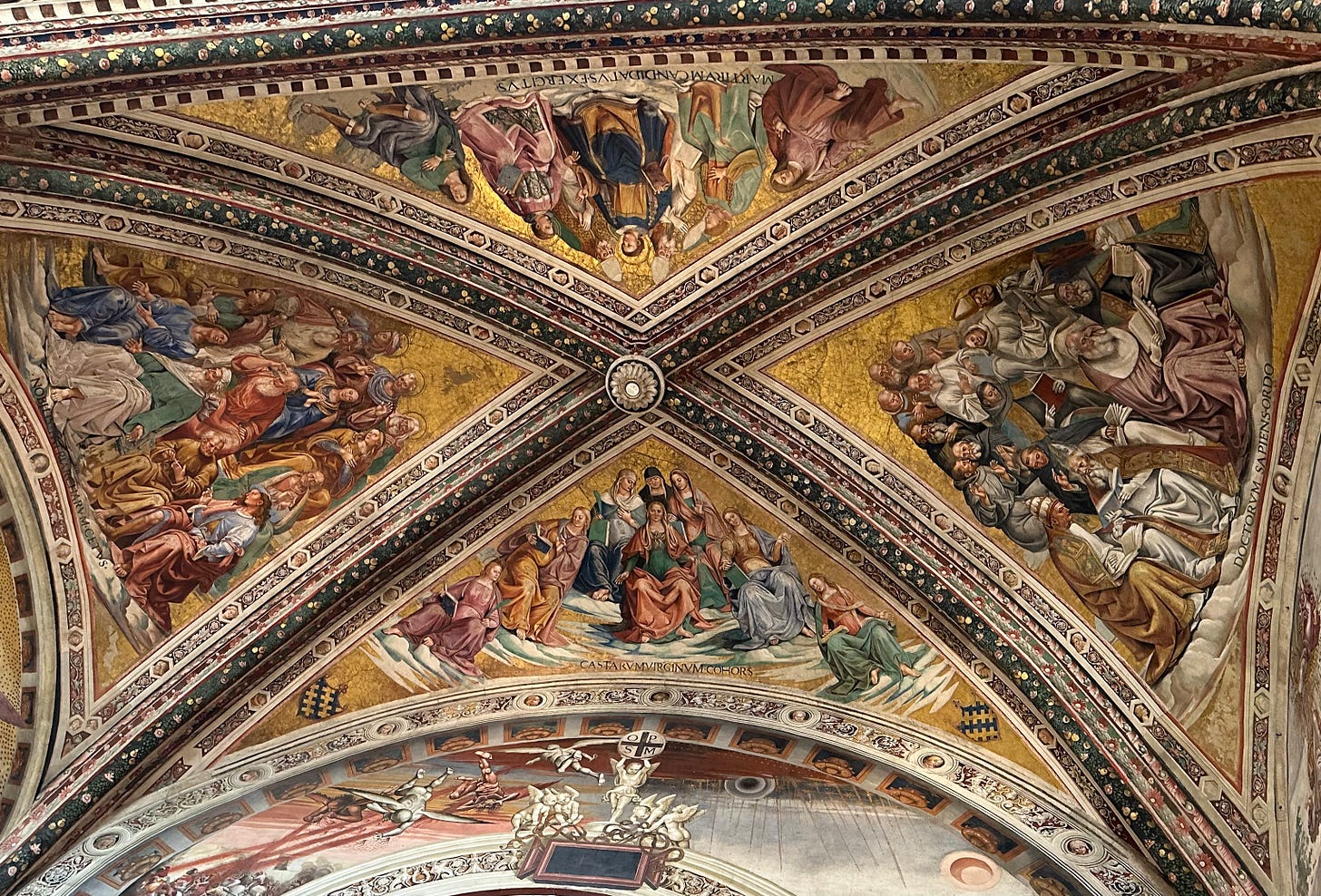
In 1492, seven years before Signorelli signed his contract, north of Orvieto Lorenzo il Magnifico had died in Florence. He was succeeded by his twenty year old son Piero the Fatuous, an epithet which encompasses his spectacularly inept, and indeed brief, reign as Lord of Florence. Piero fled in exile in 1494 and the Florentine Republic was reinstated under the auspices of the Dominican monk Girolamo Savonarola amid a flurry of fire and brimstone. During the Carnival of 1497 he first instituted the “Bonfire of the Vanities”, was excommunicated by Alexander VI Borgia in 1497 and in 1498 sentenced to death for heresy and sedition. His body was burned in Piazza della Signoria. Fire and brimstone indeed.
Keep reading with a 7-day free trial
Subscribe to Understanding Rome's Newsletter to keep reading this post and get 7 days of free access to the full post archives.


